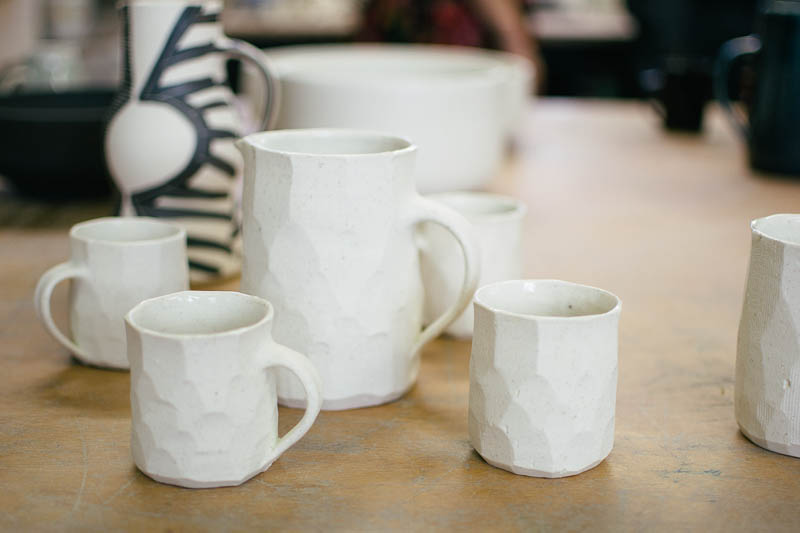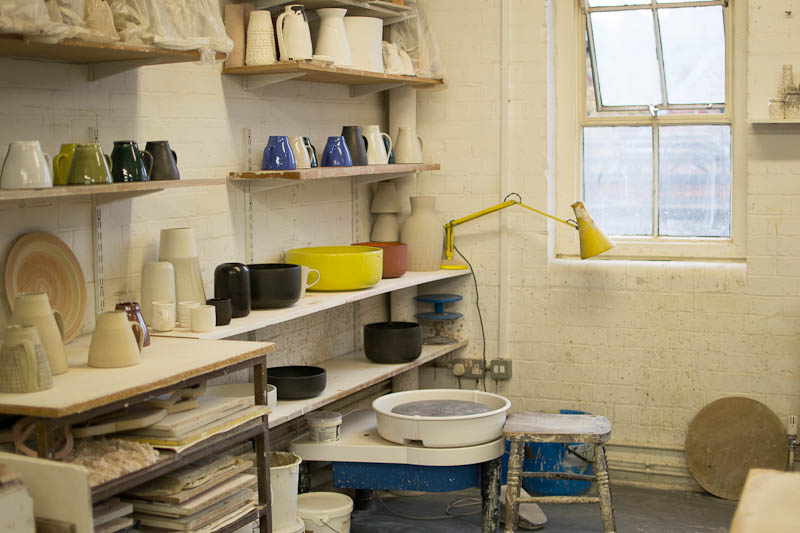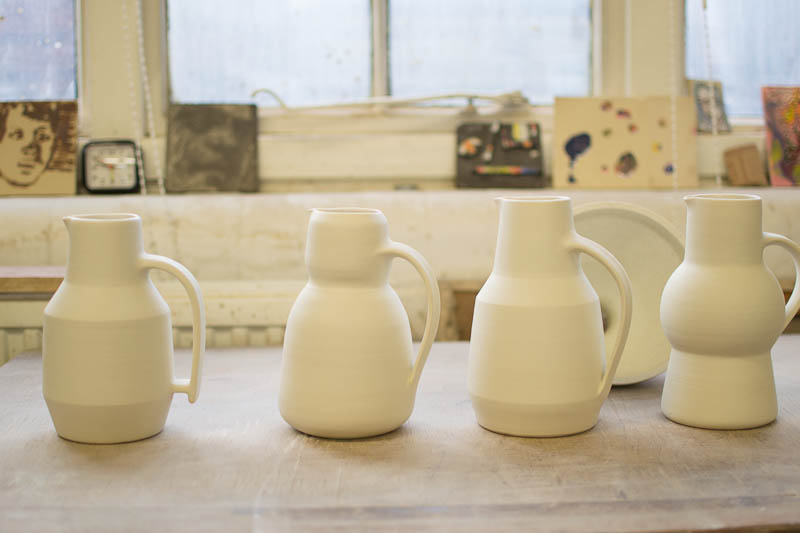In December I visited the studio of one of my favourite ceramicists, Nicola Tassie. You may recognise her work from Margaret Howell or The New Craftsmen. Each pot is slightly different but all display a defiantly strong form and experimental use of clay and colour. I am in awe of Tassie's experimentation with clay. In fact, every morning I drink my coffee out of one of her cups, and each day I think how incredibly beautiful it is. For me, that simple, faceted clay mug symbolises everything that I love about design; it's accessible, well-crafted, well-designed, and my life is enriched by using it.
How did you start making ceramics?
I actually studied painting at college (the Central School of Art), but was curious about clay, perhaps through choosing early rock art for my thesis subject. A friend and I visited the ceramics department and asked if we could have a go at throwing, the technician gave us some crank, told us to hold on firmly, and left us to it. After a short while our hands were bleeding and we wondered at the toughness of potters! Cross department interest was not encouraged at Central! It obviously didn’t put me off though, and a few years later, after graduating I joined an evening class at my local adult education institute and have not stopped since.
What made you choose to concentrate on tableware?
My first interest in making ceramics was in the surface - drawing imagery with brushes and sgraffito marks, as a way of extending my life drawing practice - and so I learnt to throw as a means to make pots quickly and small bowls and cups and jugs were about all I was capable of at the beginning! Then the form of the pot started to influence the imagery, and the simple variations of how a bulging or convex wall of a cup or bowl effect the surface design has become a main preoccupation. The function of the pot - picking it up and using it – also gives an added tactile dimension to explore. I think it’s interesting to make small scale domestic works that fit into homes, and become part of everyday living as well as carrying a specific meaning or history.
Do you look to any other potters/artists for inspiration?
Definitely, all the time. I love looking at pots, paintings and objects. The ceramics department at the V&A is a wonder. I love English slipware, German salt glaze jars, Lucie Rie, Miro’s ceramics, Marianne de Tray and more. I’ve just seen the Paul Klee exhibition at Tate Modern – wonderful, contained paintings - he is so inventive with the surfaces and colours, it’s given me some thoughts about glazing. It’s also interesting to see the new work contemporary artists, like Jessica Jackson Hutchens, are making with ceramics and clay.
Your forms are very simple and beautiful. How do you develop new shapes?
I feel I’m rather slow at making new shapes. There is a continuity in making, with each form following on from the other, the process often leading to a new idea. For instance, out of curiosity, I was throwing with some heavily grogged clay and finding it hard to work with for too long or to get it thin enough, so that the finished jug was rather too heavy for use. I decided to shave some of the clay off from the outside and ended up with a lighter, ‘faceted’ jug and new shape! I’m definitely more of a vessel maker than a bowl maker and prefer subtle curves and close handles.
You've recently started making lighting - tell us a little about that?
In Paris I saw an exhibition of French 1950/60’s potter George Jouve. I was impressed with his expansive range of ceramics, he made tabletops, stools, sculptures, wall finishes and lamps.
It’s an opportunity to work on a larger scale, building form with simple geometric shapes-cones, cylinders and spheres. They are thrown in different parts and joined together, or else I add coils to a thrown base and pull up, taking time to let it dry off a bit before continuing with another coil until they look finished. At the moment I’m glazing them very simply in either matt black or white, as there is enough play with the shadows across the form when the light is switched on.
What different clays and glazes do you use?
I make ranges with different types of clay, at the moment I’m using a light buff stoneware, a black stoneware, a beautifully smooth mid-range Keuper Red and Limoges porcelain. I also add different grades of grog to get different surface effects. I keep a lot of glazes in the studio, either made from recipes (they always turn out different from the description!) or ready-made powders from the pottery suppliers. I have phases of working with particular ones, but a lot of my current porcelain work is left raw on the outside and glazed with a glossy transparent on the inside.
Where do you sell and exhibit?The Wills Lane Gallery in St Ives, Contemporary Ceramics in London, Maud and Mabel in Hampstead, London, Gallery Top, Matlock, Derbyshire, The New Craftsmen and Margaret Howell shops in London , Paris and Tokyo. At the moment, I also am in an exhibition: Mud and Water, at the Rokeby Gallery, until 6th March 2014.
Thank you Nicola!









































































































































